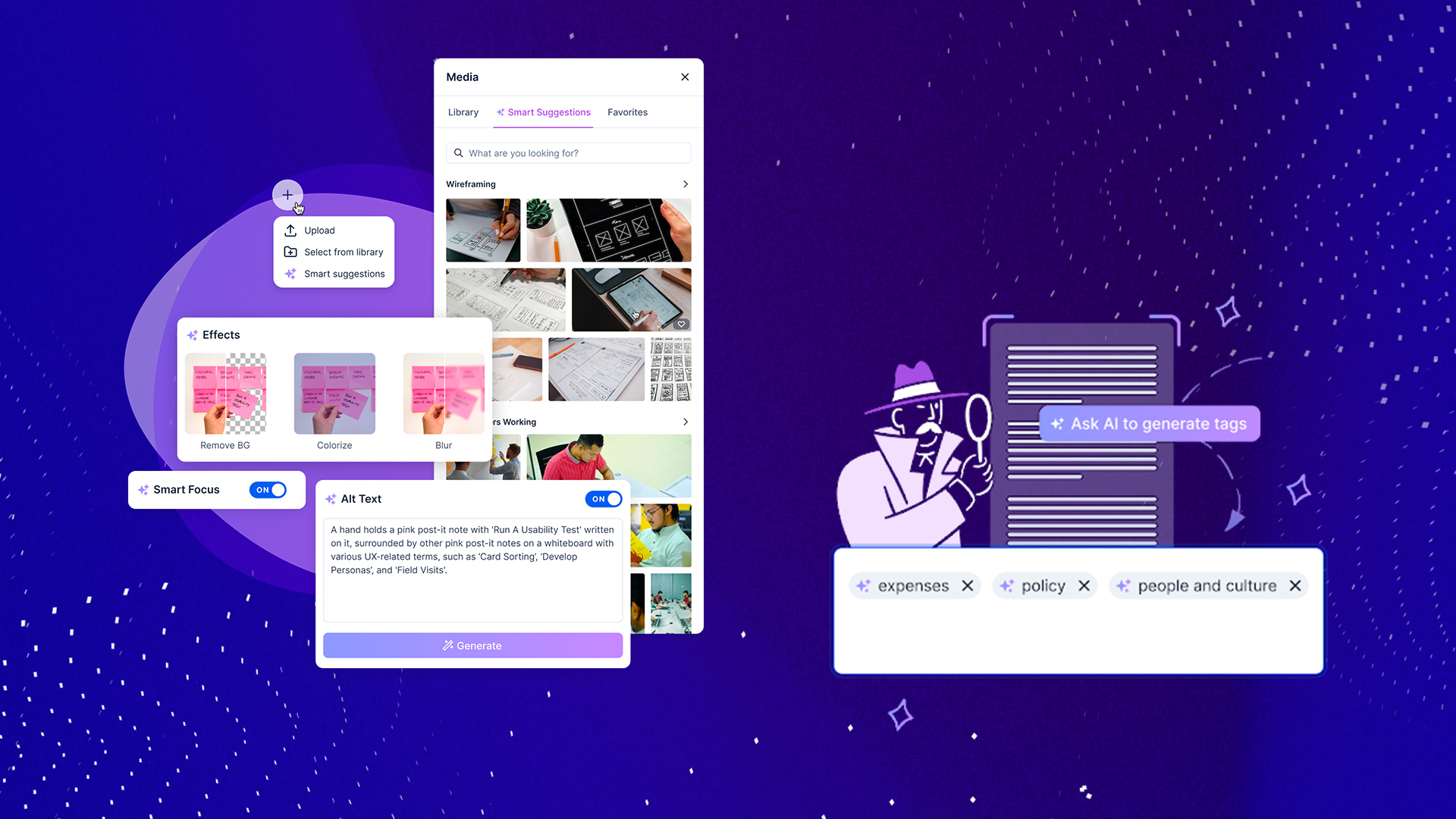Every business leader hopefully understands the importance of effective workplace communication. A business environment that prioritizes productive communication sets itself up for success. But let’s be honest, making sure everyone communicates effectively – especially in remote or hybrid work setups – is easier said than done. The good news is that artificial intelligence (AI) technologies can help.
According to McKinsey, generative AI is “poised to unleash the next wave of productivity,” with the potential to automate work activities that absorb 60 to 70% of employees’ time. But with all the buzz around this tech (especially generative AI) it can be confusing for decision-makers to figure out what kind of AI is helpful and what’s just hype.
Let’s dive into how AI is shaping the workplace for the better and how it can improve internal communications in your workplace.
How AI is changing the traditional workplace
The traditional workplace has several obstacles when it comes to employee communication:
- Feedback issues: Without regular feedback channels – and analysis of that feedback, leaders are in the dark about employee engagement, sentiment, and motivation.
- Time spent generating content: Internal communication content takes time and effort to write, design, and deploy.
- Poor knowledge management: Much communication depends on people remembering or being able to find the right information. This can be negatively impacted by staff turnover.
- Stress and a heavy workload: These things can inhibit the effectiveness of all of the above.
And if you have a remote or hybrid work environment, you’ll see these problems exacerbated. AI is changing how the traditional workplace communicates by solving these problems. We’re talking about machine learning technologies, machine translation capabilities, natural language processing (NLP), and more. AI facilitates communication throughout organizational hierarchies, speeds up content creation, and relieves employees of much of the burden of communication reminders and needs.
How AI can improve workplace communication – 5 benefits
1. Gain insights
AI can analyze massive amounts of data about employee productivity and happiness. If your organization conducts employee surveys or seeks feedback on improving communication in your environment, AI tools can swiftly break down the results. These insights can be a game-changer in monitoring morale, employee engagement, and identifying areas for improvement across your entire organization.
2. Generate content
Generative AI tools can be used to rapidly create emails, PowerPoint presentations, and other deliverables needed for internal communication. With the right prompts and data, auto-generating text tools like ChatGPT can even help produce reports, slashing the time spent writing content for stakeholder meetings or other internal sessions.
It’s like having a creative springboard for your materials. Just remember to give it a final touch and edit as needed to enhance your communication.
Appspace Chief Product Officer, Stan Stephens, says: “The age of us spending hours trying to get content, images, and graphics correct is going to slowly slide away as generative AI creates good enough or great enough output.” Check out this Q&A with Stan here.
3. Improve employee understanding
If you have a global or geo-dispersed workforce, AI can support communication by breaking down language barriers. Generative AI can translate meeting transcriptions into any given language and uses NLP to make transcriptions as clear as possible. If employees are confused about terminology or meaning in specific content, they can also ask generative AI for explanations — skipping the need to take a human away from a task to provide an answer.
4. Use AI as a personal assistant
AI helps to reduce the time involved in manual and administrative tasks related to communication. For example, if an employee wants to be reminded to email a coworker, they can ask AI to remind them or even generate the email. These automation capabilities reduce dependency on (our sometimes fallible) human memory to keep communication going.
AI can also provide us with automated transcriptions and summaries helping us to cut through large amounts of data and focus on what’s most important.
5. Improve productivity
When your internal communication is at its best, employee productivity will be at its highest. With all the functionality discussed above, employees see streamlined meetings, faster collaboration, and clearer actionable items to facilitate work. Overall, your organization will improve productivity by using AI to support communication.
Appspace’s Chief Innovation Officer, Thomas Philippart de Foy, thinks that AI in the workplace will reduce a huge amount of friction in the way we communicate and do our jobs. “The whole experience should be interconnected. It’s not about creating communications in one pipe and blasting it out. We need to think of the workplace as a 360-degree experience. This is where our platform plays a key role. Our Digital Signage talks to the Employee App, to kiosks and space reservation tools… AI levels the playing field when it comes to content creation – meaning we can really empower employees, at any skill level, to create high-quality content easily.”
Read more about how AI will change the future workplace, consumerizing the experience for employees.
Explore AI in your workplace with Appspace
Appspace is a workplace communication expert, and we’re committed to helping organizations leverage the power of AI to create the best possible work environment.
If you’re curious about how AI might support your productivity and collaboration goals, learn more about Appspace AI.
Or get in touch today to see what we can do for your organization.


